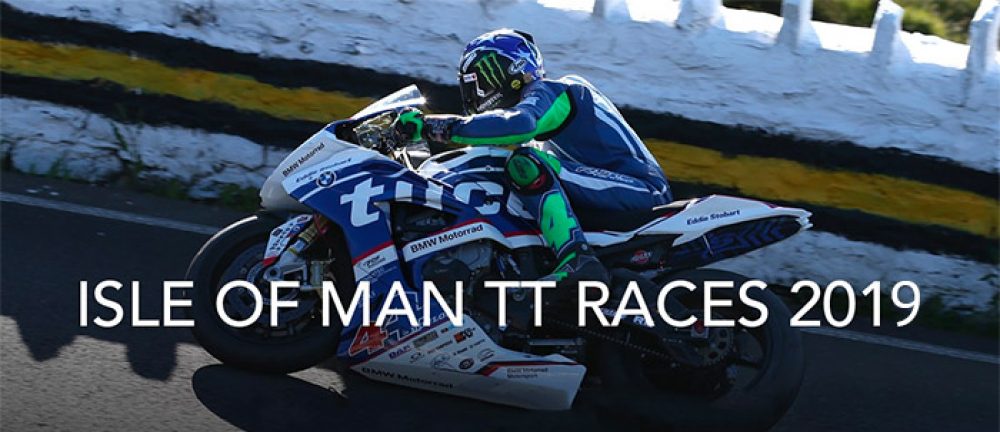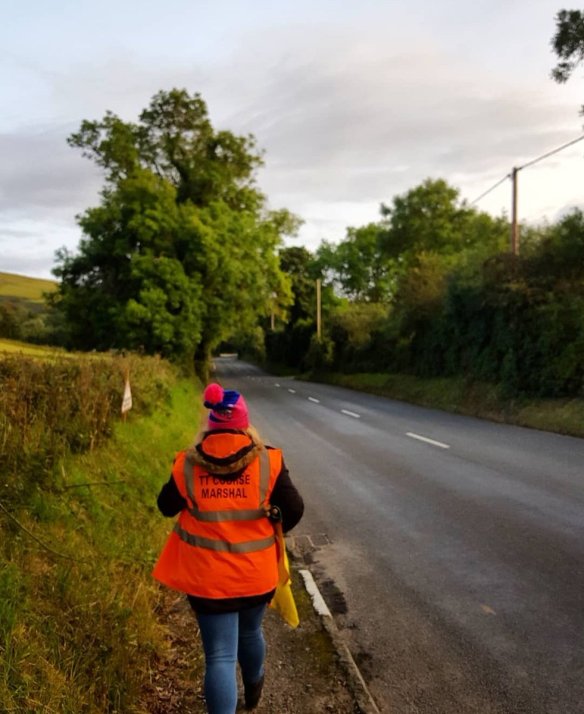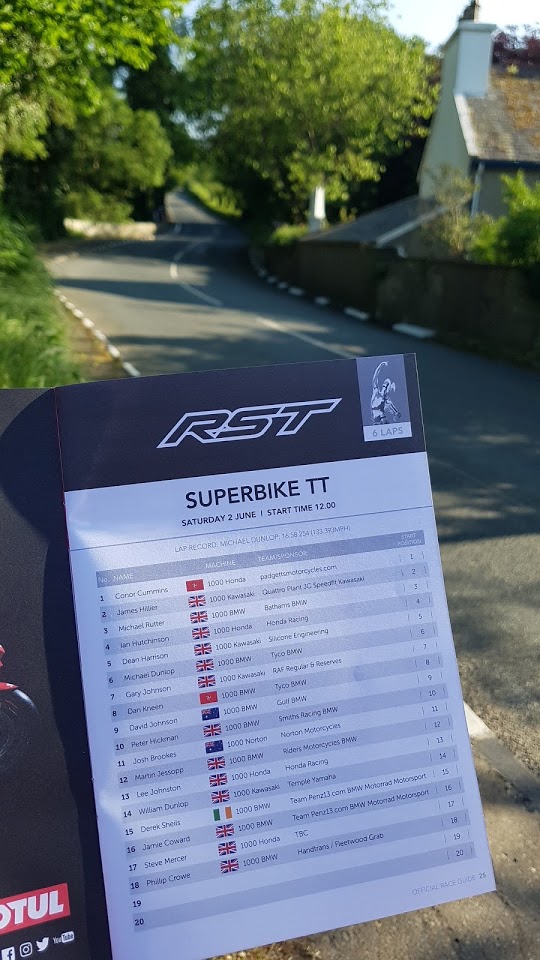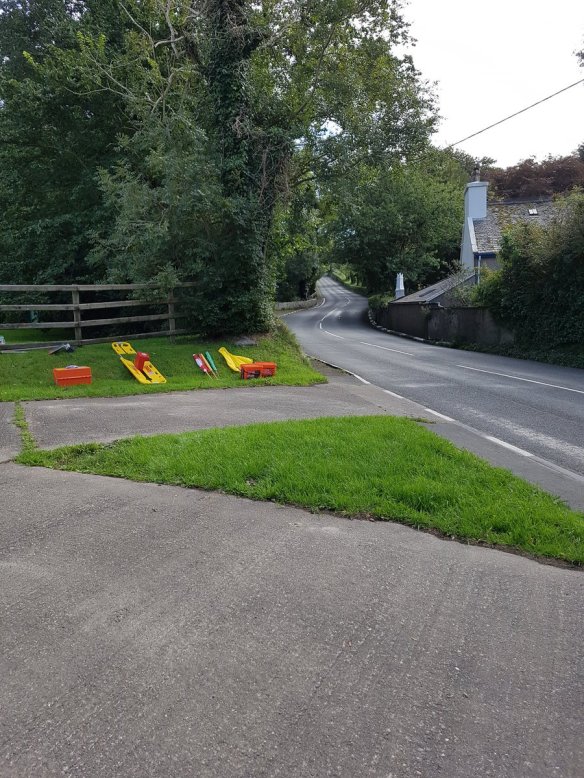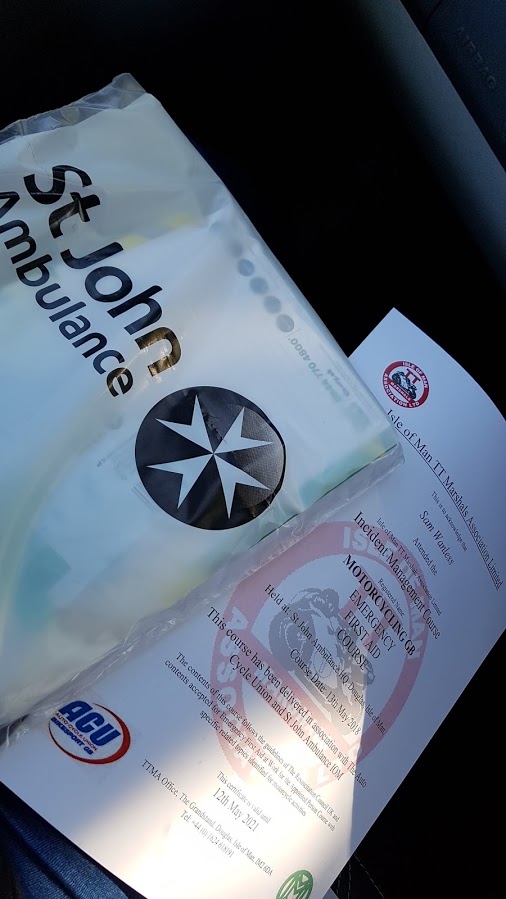It wouldn’t be TT 2019 if we didn’t have a twenty-minute delay due to a non-racing medical emergency and awkward spectators would it?
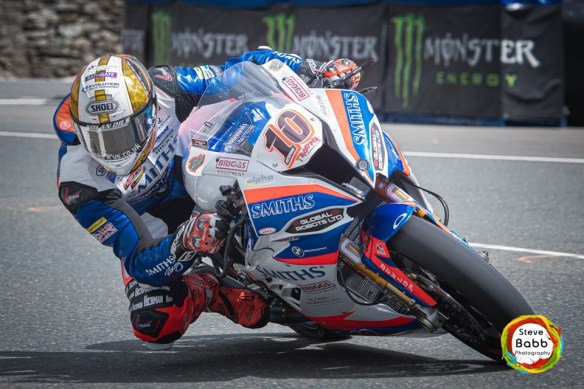
It was the Superbike race up first. This was scheduled to run on Saturday along with the Sidecar Race 1, however, as we are all aware, the weather didn’t exactly play ball last week. Due to this, the Clerk of the Course shortened the Superbike race from six laps to four. Many people will say ‘it’s not a proper Superbike race unless it’s over six laps’… I completely agree, but considering on the Sunday there were question marks over whether we would see any racing at all, I’ll take the four-laps thanks! Of course, as if we weren’t already short on time, we had a twenty-minute delay. A non-racing medical emergency, which of course can’t be helped, but what can be helped is spectators not being bloody awkward! I know a marshal who managed to survive the ‘axe-murderer of Laurel Bank’ a couple of days ago (you think I’m joking, I’m not…) and now they’re having to deal with more spectator-led issues. It really isn’t on. Can you all just behave yourselves and watch the racing like civilised humans rather than pack animals?!
Anyway, the race finally got underway at 11:05 with weather conditions reported as good all around the Mountain Course with the exception of possibly the mountain itself where winds were gusting up to 25-30mph. Head, tail, cross-winds – none of which make for pleasant racing up top, but I suppose that’s why we have ‘Windy Corner’. It didn’t seem to dissuade any of the racers as they all seemed to get off to a cracking start. Harrison led at Glen Helen on the opening lap, one of the fan favourites, and Hickman slotted into second just 1.1s back. As the Isle of Man TT is a time trial, it’s hard to imagine what 1.1s looks like around here. It’s something you never see. I still find it hard to comprehend that if number 10 catches up number 9 on the road, number 10 is 10-seconds faster than number 9 already even though it doesn’t appear that way as they flash by you. I know a lot of people may be used to the Irish road races where they’re set off in waves, but essentially the majority set off together. Not here. Each racer gets the tap on the shoulder every 10-seconds, therefore it can be quite difficult to distinguish correct positions until the quickest person has gone through the timing beams. This is a major pain in the bum with Hickman being #10…
James Hillier slotted into third at Glen Helen whilst Conor Cummins placed fourth only a tenth of a second behind Hillier. Okay, a tenth of a second could cost you a place on the podium if you’re at the end of a race, but it’s such a minute difference on lap 1! The two Michaels, Dunlop and Rutter, rounded out the top six. John McGuinness, Lee Johnston and Ian Hutchinson didn’t get off to a great start as they placed in 14th, 15th and 16th respectively, but the excitement was building at the front as Harrison was still fending off Hickman whilst Cummins moved up to third ahead of Hillier at Ballaugh. I think the Ballaugh to Ramsey section is one of the most technical parts of the course. After Ballaugh bridge you have to negotiate Ballacrye jump, the S bends by the wildlife park (Quarry Bends as it’s commonly known) and before you know it the throttle is pinned down (up? Manx for you..!) Sulby straight. Next, you’re braking hard to get yourself round the right-hander that is Sulby bridge and throwing it back over to the left to power on round past Ginger Hall. By the way, the Ginger Hall does amazing food and the TT course is on the ceiling in the bar section, so when you’ve finally had too much to drink you can have a rest and make your own TT race up in your head. Happy days! From the Ginger Hall you’re onto the bumpy, bendy bits. However, I presume, or you would hope, the suspension on these superbikes might help them to glide over the bumps a little bit better than your usual road bike especially at those kinds of speeds. It’s a bit of a blur round there!
… and then you see the ‘Welcome to Ramsey’ sign, through Milntown, past Ramsey Grammar School and brake brake brake throw it right for Parliament Square, throw it left and you’re on the way to the Hairpin. Harrison led by 1.4s, Cummins was only 3.8s back on Hickman, but around 8s clear of Hillier. They were starting the Mountain climb, round the gooseneck and off to battle those winds. A lot of riders compare the Mountain section to short-circuit racing which I understand, but you could so easily get lost as to which corner you’re at, what’s coming up next, etc. There’s even some tramlines to contend with and they’re not the best of things to deal with on open roads let alone on a superbike. Round windy corner, which I believe was very windy, and you’re heading for Kate’s cottage and then the pub – the Creg-ny-Baa. Great food too! From there, although I know some have run out of fuel between the Creg and the Grandstand, is pretty much the home straight with a few bends, dips and kinks. The end is very quickly in sight… the speeds they come round Hillberry probably helps with the ‘quick’ bit!
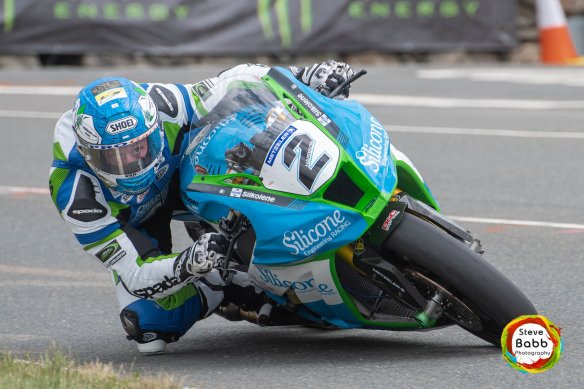
Harrion’s opening lap of 132.48mph gave him a slight lead over Hickman who remained second. Cummins retained third, but Hickman had pulled the pin and the gap to second was now 4.8s. The top three were the only three riders to lap at over 130mph. At the end of lap 1 McGuinness pulled into the pits and got off his Norton Superbike. He was forced to retire due to an oil pressure issue. Derek McGee was also a retirement. The rest of them were starting lap 2 and Harrison had made his way to Glen Helen before anyone had time to blink. There was, however, no change with Hickman still second and Cummins third, Hillier fourth. The only change near the front was Rutter had moved up to fifth pushing Dunlop down to sixth. Harrison put the hammer down between Glen Helen and Ballaugh to increase his lead to 4.8s, but Hickman retaliated over the Mountain to reduce that gap to 0.045s and Cummins re-gained the lead on the road ahead of Harrison. It was all still to play for as at the end of lap two it was time for a pit-stop.
At the end of lap two Hickman had finally overhauled Harrison and now had a 1.7s lead. Cummins remained in third whilst Hillier broke the 130mph barrier to continue in fourth with a comfortable 13s lead ahead of Rutter, Dunlop just behind in sixth. Jamie Coward was having a phenomenal race up into seventh with David Johnson, Gary Johnson and Davey Todd completing the top ten at the end of lap two. Hickman still led, but Harrison was eking back the lead slowly as the gap at Glen Helen had dropped to 0.69s. Both Harrison and Cummins had almost made their way to Ballaugh before pulling in due to a full-course red flag.
The race was declared a result as at the end of a lap two meaning Hickman won the 2019 Superbike TT race on-board the Trooper BMW, Harrison took second and Cummins third. Hillier finished fourth ahead of Rutter and Dunlop with David Johnson, Jamie Coward, Gary Johnson and Davey Todd rounding out the top ten.
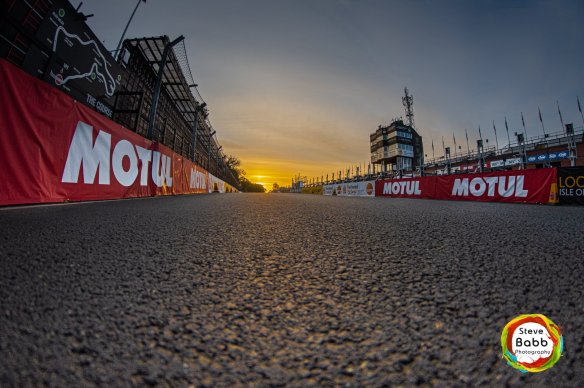
A red flag in any race makes you a bit nervy, but a red flag during a road race makes your heart sink. Manx radio had stated there had been an incident at Snugborough, between Braddan Bridge and Union Mills, but there were no further updates at that time. When there’s been a red flag, I don’t think you can really concentrate on what’s to come until there’s been an update, but you’ve got to remember these are the TT races and the races must go on. You have to try and think ‘no news is good news’, but in reality, you know that never really appears to be the case. It really does seem heartless when it’s written down, but hand on heart no racer who has lost their life at the TT or any other race for that matter would want any races to be postponed or cancelled. It’s a difficult concept to understand, but we go again… It’s a sign of respect, it’s a show of solidarity. My heart goes out to the organisers during red flag situations particularly the marshals involved. We know when we sign-on to marshal we could be faced with an incident, but until that time you don’t really know how you will react. The race officials in the control tower not only have to deal with the incident at hand remotely but the media and the speculation too. On top of that they also have to stay one step ahead and figure out the remaining day’s schedule too. Although the Superbike race was declared a result, the sidecars were still scheduled to race and that’s exactly what they did. More about that later.
Just after the sidecar race finished, although not through the official channels, there was the news no one wanted to hear.
Not something I ever wanted to write but here we go…..
Daley, as Daisy says, is now sleeping with the fairies. That’s all I can bring myself to say right now. The last image I saw of my husband, was of a man so happy with life and so proud of his racing. xxxxxx pic.twitter.com/wWCaDJwUht
— Daley Mathison (@DaleyMathison) 3 June 2019
Daley Mathison’s wife tweeted that her husband had lost his life.
Shortly after the ACU issued an official statement confirming that Daley Mathison had been involved in the incident at Snugborough which occurred on the 3rd lap of the Superbike race and had sadly died.
The statement read as follows:
ACU Events Ltd regrets to confirm that Daley Mathison, 27, from Stockton on Tees, Durham was killed in an incident during the Superbike Race today at the Isle of Man TT Races. The accident occurred at Snugborough, just over 2 miles into the Course, on the 3rd lap of the race.
Daley was an experienced competitor and was seeded 19th for today’s race. He made his Mountain Course debut in the 2013 Manx Grand Prix Newcomers A Race, finishing fifth. His TT career included three consecutive podiums in the TT Zero electric bike Race in 2016, 2017 and 2018 including the runner up position in the race last year, representing Nottingham University.
He also achieved an 11th place finish in last year’s Superstock Race and a pair of 13th place finishes in the 2017 and 2018 Senior TT Races.
He set his fastest lap of the Mountain Course – 128.054mph – in the 2018 Superstock race which made him the 34th fastest rider of all time. He set the second fastest TT Zero lap ever with lap of 119.294mph in the 2018 race.
In total he started 19 TT Races with 14 finishes and 3 podiums and won 6 silver and 8 bronze replicas
ACU Events Ltd wishes to pass on their deepest sympathy to Daley’s wife Natalie, his family and friends.
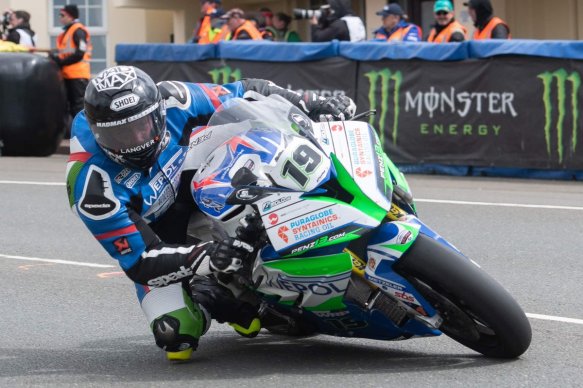
Unfortunately with the likes of social media something like this isn’t kept quiet anymore and usually it is published on every site before official confirmation. However, this time, maybe for the first time in years I saw no speculation. Maybe I was fortunate enough not to see it, or maybe it wasn’t there to see. Those of us who know this sport, who respect this sport know that nothing good ever comes of speculation. It’s heartbreaking that families and teams don’t get the privacy they need to process what has happened first before it is publicly announced. However, Daley’s wife, Natalie, has dealt with the the social media aspect so admirably. No one knows how they will react until it happens to them. My thoughts are with Daley’s family, team and friends at this sad time.
I really struggled to write this. It’s hard to convey any kind of excitement about the first two-laps of a race when you know the outcome of lap 3. We all know the risks of the sport and I’ve never been one to shy away from the negatives because it is, unfortunately, part of road racing. However, we often criticise certain news outlets for only focusing on the dark side of this sport and I for one will not follow suit. The racers that went out afterwards in practice and those who went on to race in the Supersport race in the evening showed so much courage to get back out and race around this 37.73 mile course. They went back out to continue to live the dream for those who no longer can’t. They get back on two-wheels and race down Bray Hill because it’s their therapy, their happy place and they deserve their moment too. Please don’t try and tell us our sport should be no more, that we should suppress such natural born talent on a motorcycle because some people who aren’t even involved in this sport are worried about the consequences. We will always treasure the moments we had with those who are no longer here to live their dream and we will ensure their dream and their life lives on through racing.
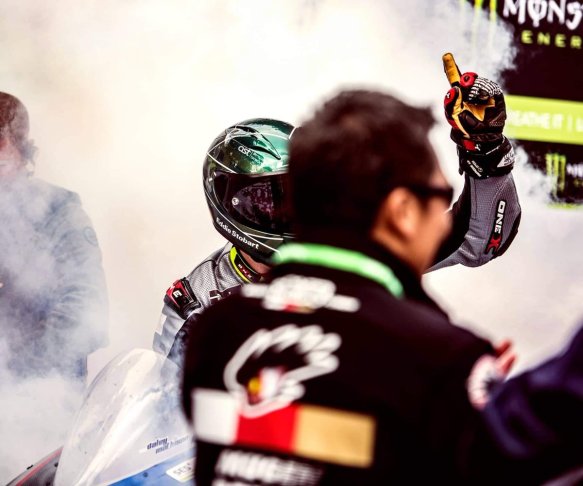
Words by Samantha Wanless
